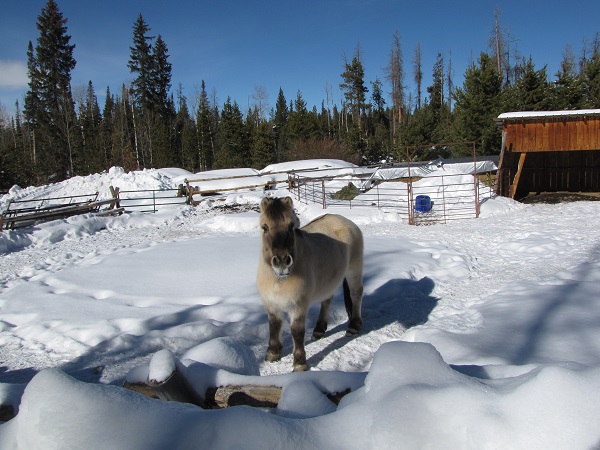I was feeling out of sorts, but pony chores still needed to get done. In the course of moving ponies from one place to another, I fed a treat to a pony that I usually don’t treat. I gave in to the look in her eyes that said, “I know you’ve given treats to the other mares; what about me?” I immediately knew I was going to regret the decision. In my experience it takes as long as three months before a pony who’s been given a treat will stop looking for one.
It was right after the holidays, and my brain was a little foggy and I was a little achy. I was pretty sure I knew what the source of my discomfort was; I had gone off my usually healthy diet and eaten more sugary foods than normal from Thanksgiving through New Year’s. I had cleaned up my act but then relapsed on a long road-trip, eating leftover Christmas cookies to pass the time. After that, though, I ended up having trouble walking. It took even longer to clean up my act than it had before. This wasn’t a new downward spiral for me; I’d been here many times before in my life. I knew I needed to shape up, but I also knew that I would likely succumb to dietary indiscretions again; history has definitely repeated itself in my life in that department. Then I heard a podcast that gave me new insight and new motivation.
The title of the podcast (click here) was about detoxing the brain. What really sucked me in, though, was the link the doctors made between poor dietary choices and decision-making. I was obviously well aware of the link between poor dietary choices and inflammation in my body. But what was new to me was the link between poor dietary choices and brain fog and the downward spiral of poor decision making that results from that brain fog. It turns out then when our body is inflamed, so is our brain, though we rarely recognize it because we feel so out of sorts. And when our brain is inflamed, with brain fog being a tell-tale symptom, we tend to make decisions differently. Instead of making decisions with long term benefits and strategic goals in mind, we make decisions that result in shorter term gratification. And those shorter term types of decisions tend to be self-fulfilling. Eat the leftover cookies as a treat on a long ride in the car rather than avoid them, then suffer even more and make more bad choices. It’s not just a mental cycle; there’s biochemistry behind it, too, which is what makes it so challenging to undo.
So, getting back to treating that pony…. I wasn’t feeling well, and I made a decision to feed her a treat which made her happy in that moment and I was happy too because I made her happy. But when I’m feeling well, I don’t succumb to that look from those big brown eyes, and instead her manners are better and our relationship can be focused on expanding her skills rather than me fending off her attempts to get in my pockets. And I am happy because she’s a better pony than she was before.
Now that I understand the impact that poor dietary choices have on my decision-making, I see a lot of patterns in my life that perhaps I can now reshape. I’m more motivated than ever to stay clean!
© Jenifer Morrissey, 2020
Stories like this one populate my book The Partnered Pony, available internationally by clicking here or on the book cover.



